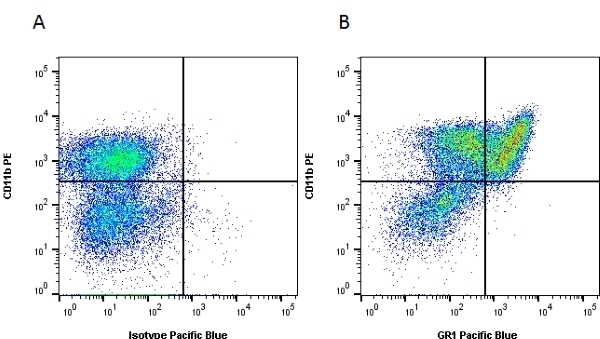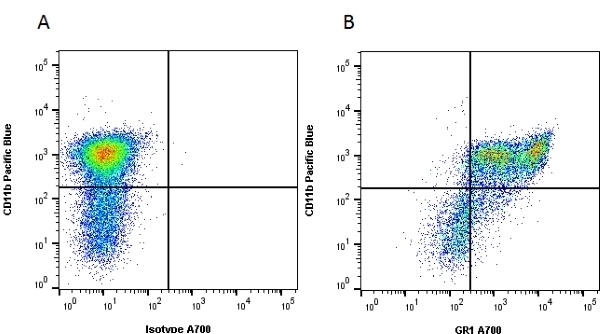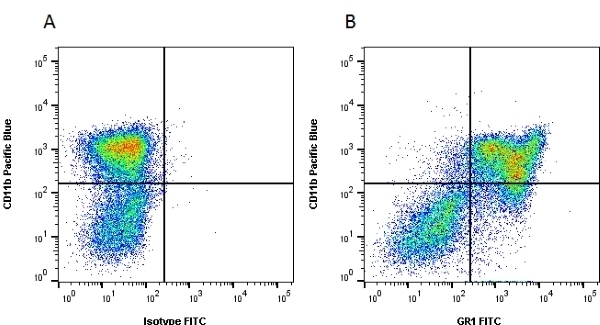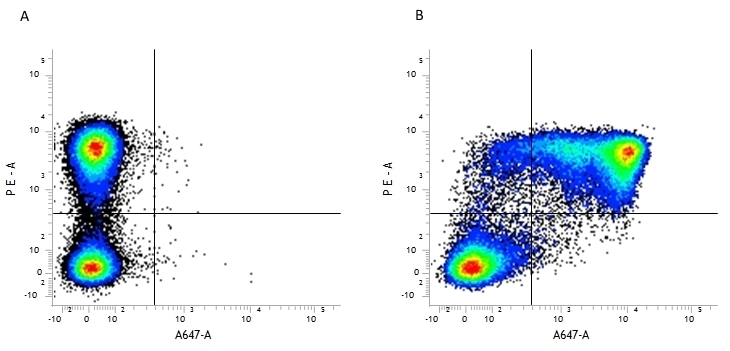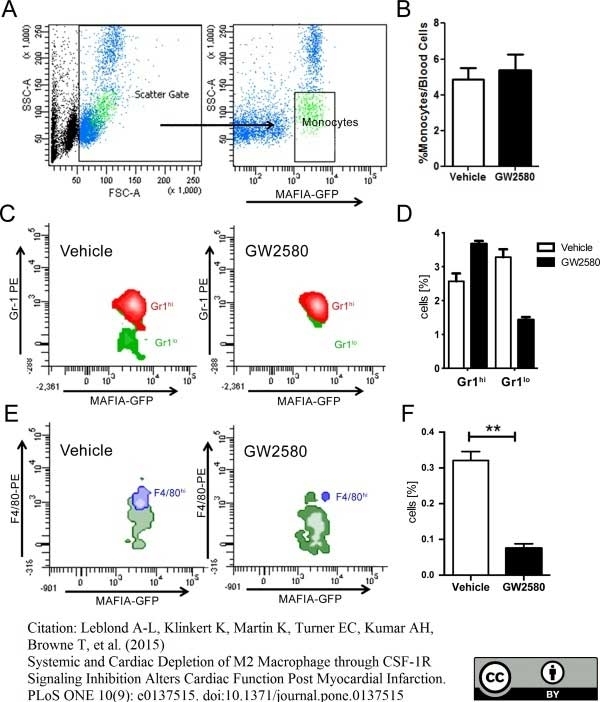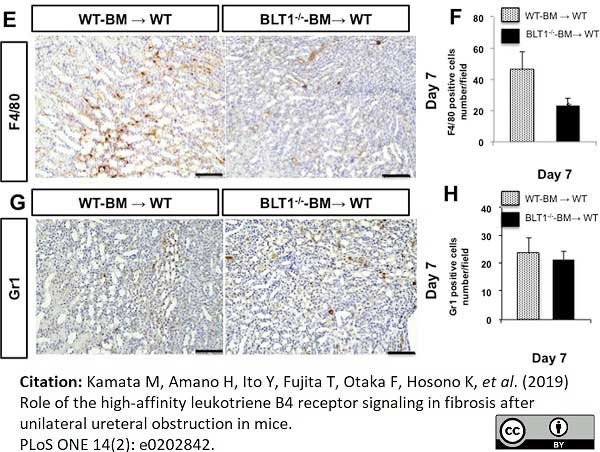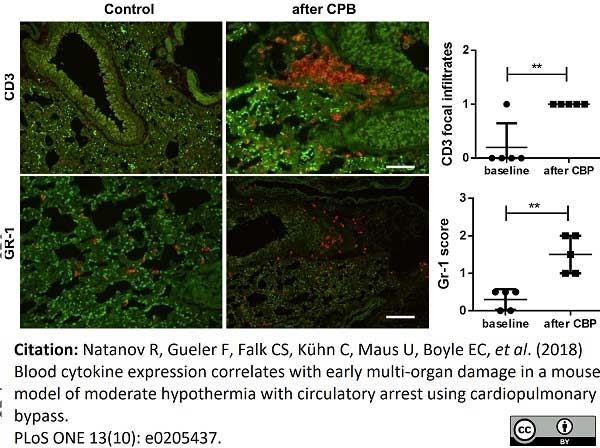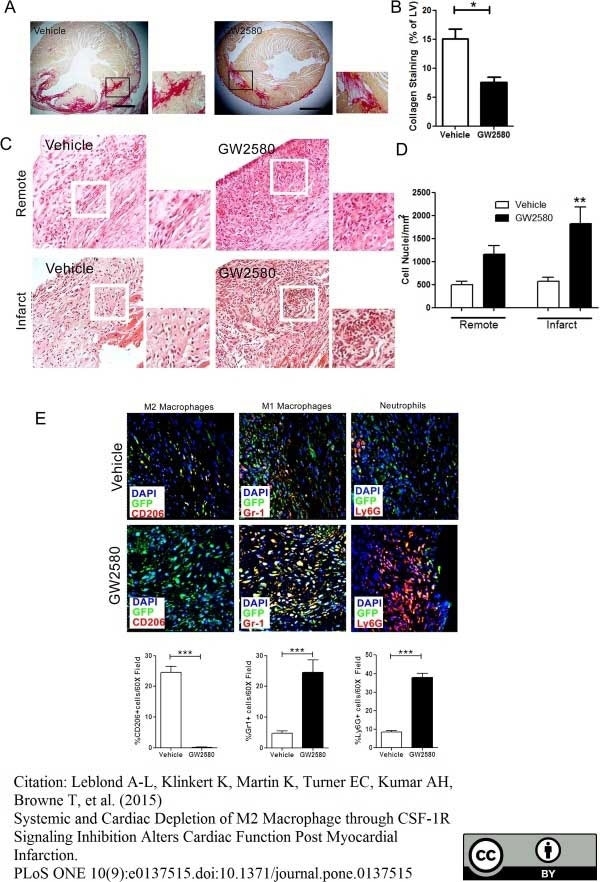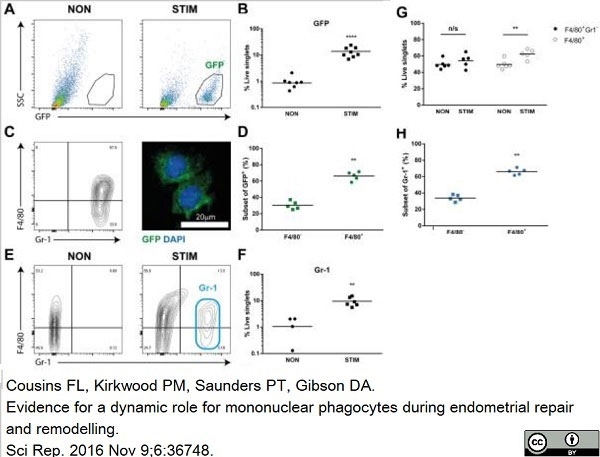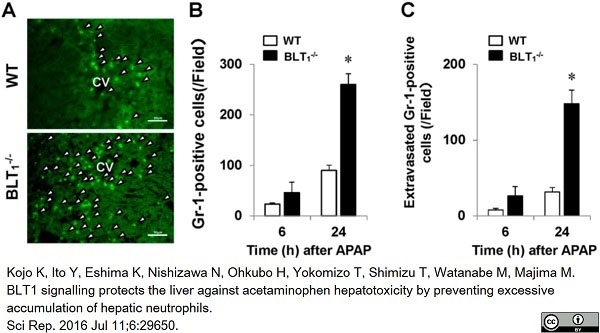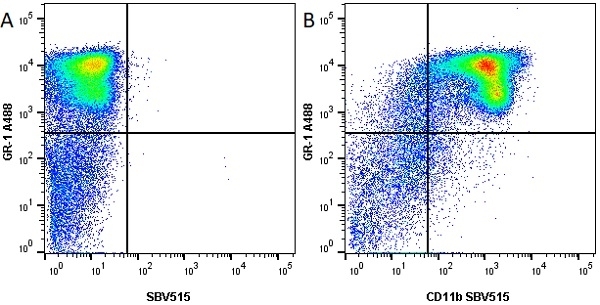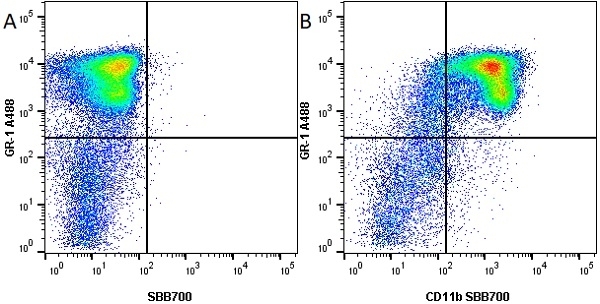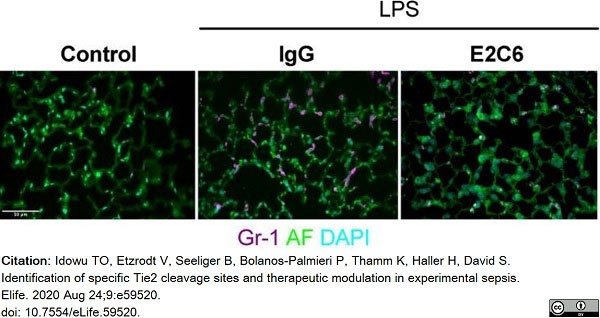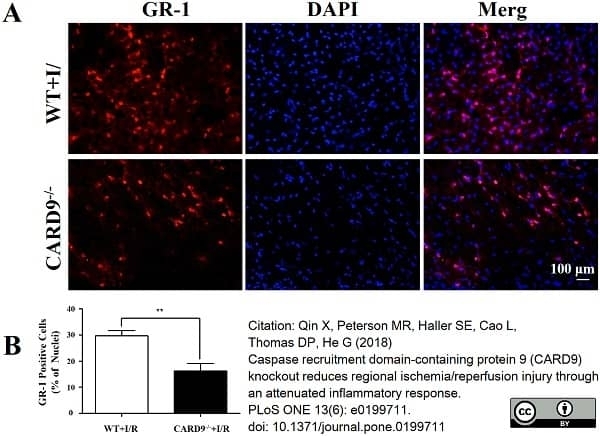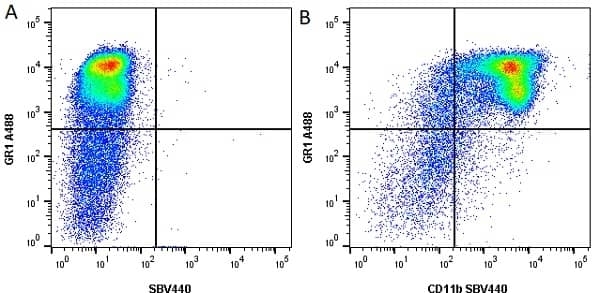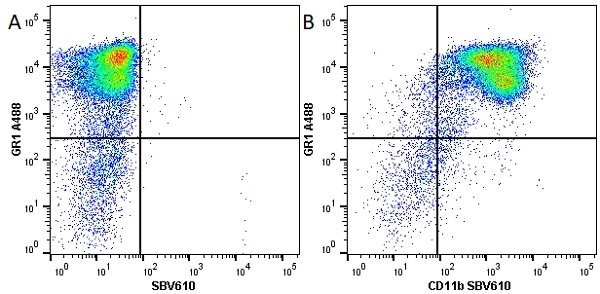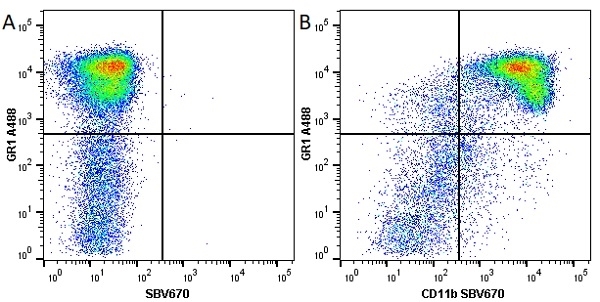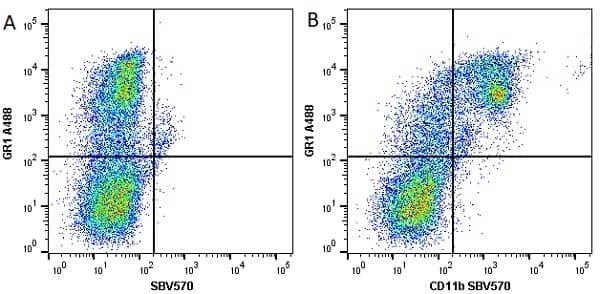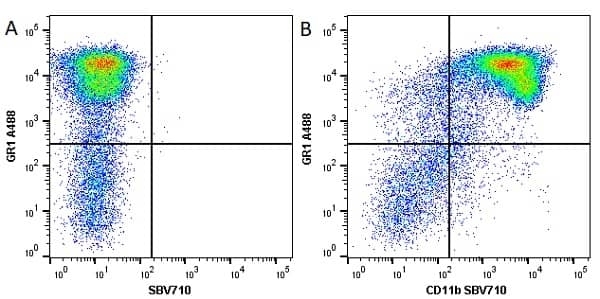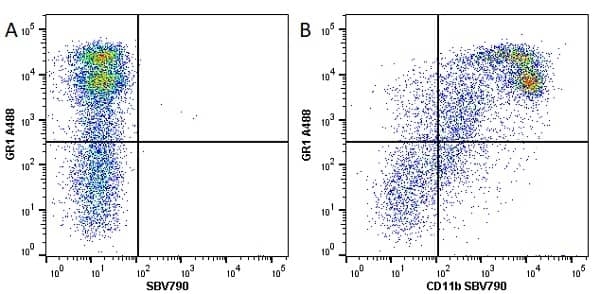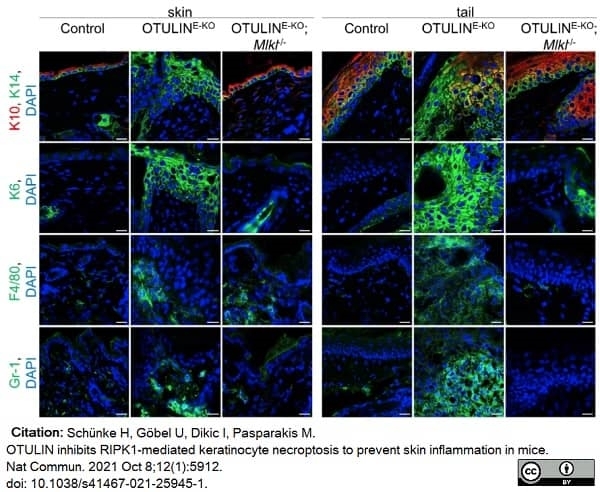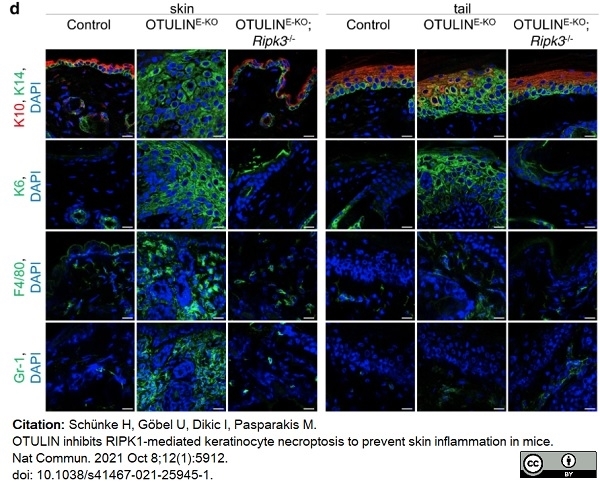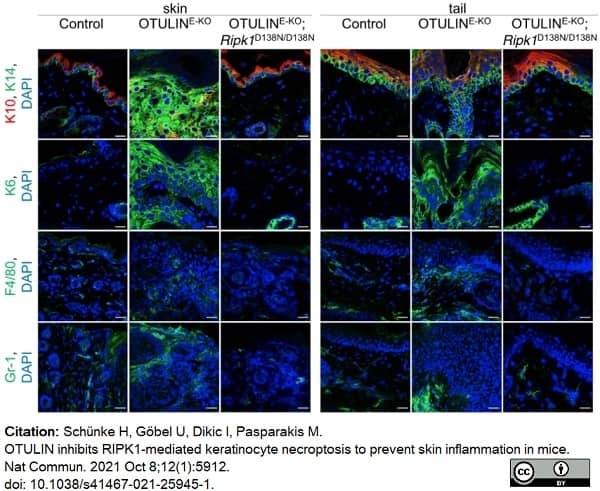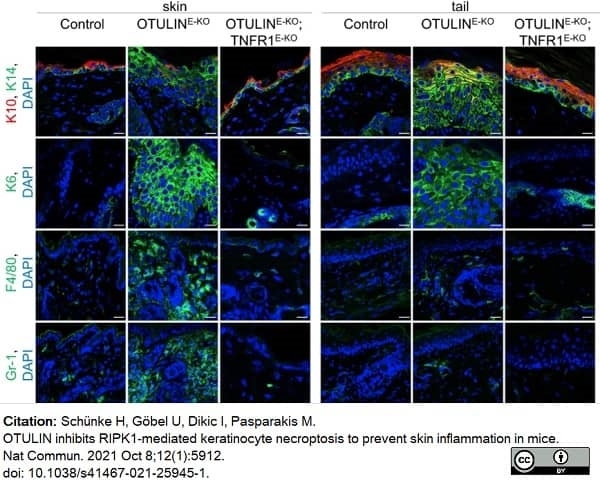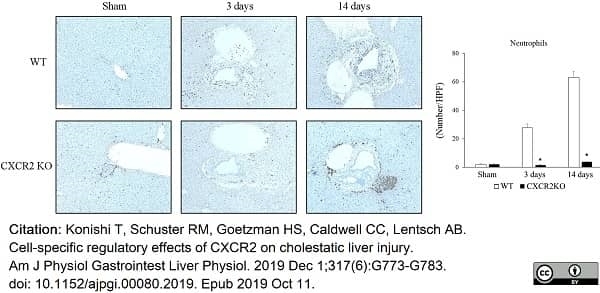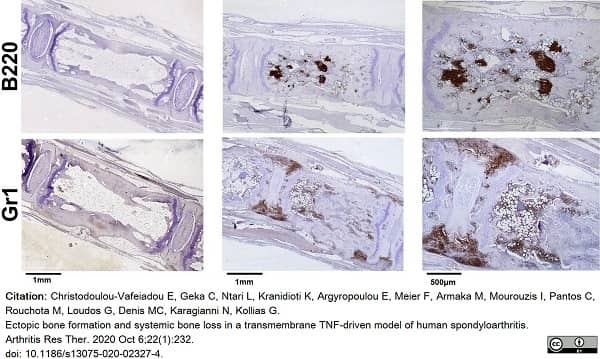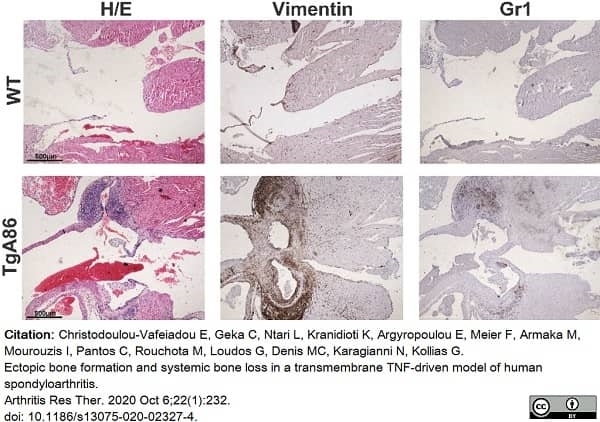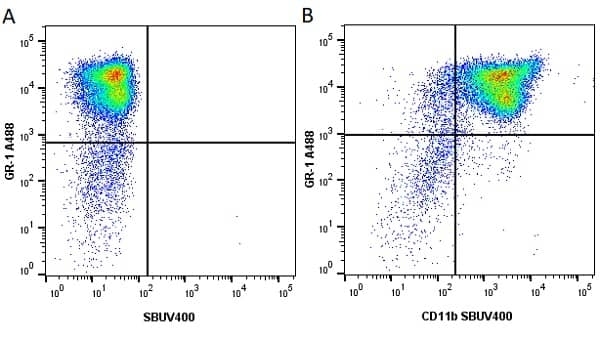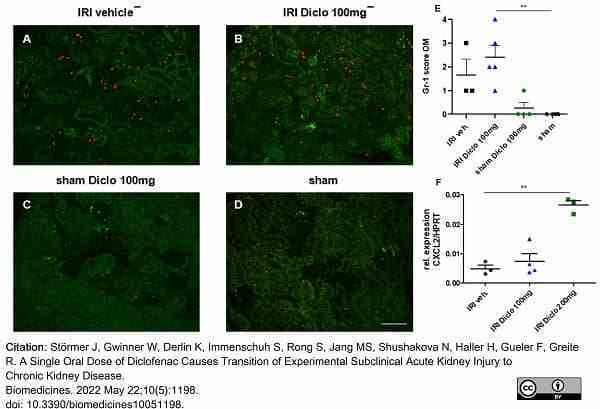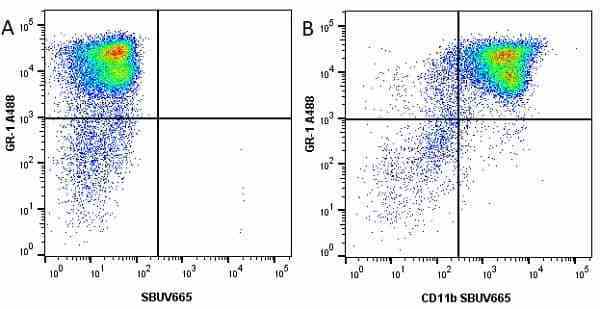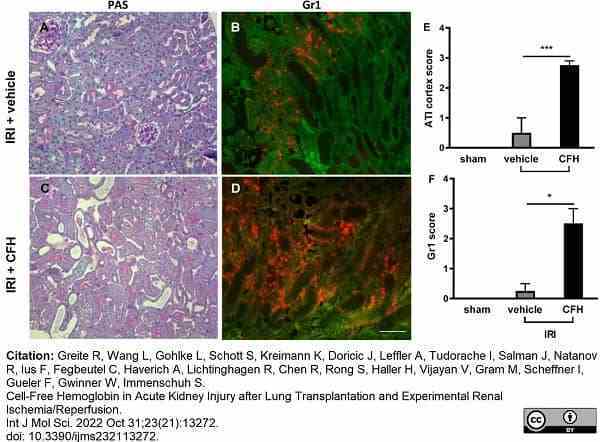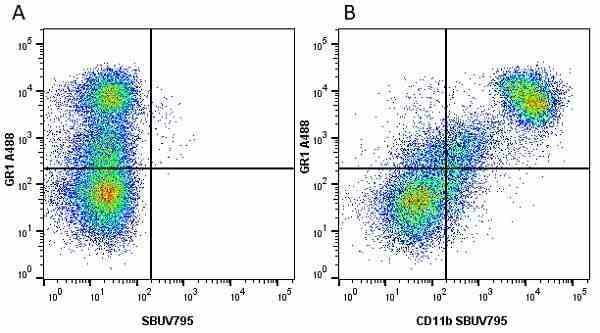Gr-1 antibody | RB6-8C5




































Rat anti Mouse Gr-1:Alexa Fluor® 647
- Product Type
- Monoclonal Antibody
- Clone
- RB6-8C5
- Isotype
- IgG2b
- Specificity
- Gr-1
| Rat anti Mouse Gr-1 antibody, clone RB6-8C5 recognizes the mouse Gr-1 antigen, a ~21–25 kDa GPI anchored cell surface protein bearing a single uPAR/Ly6 domain that belongs to the Ly-6 family of proteins (Lee et al. 2013). Rat anti Mouse Gr-1 antibody, clone RB6-8C5 reacts predominantly with the Ly-6G protein but weaker reactivity with the Ly-6C protein has been reported (Fleming et al. 1993). However, other observations dispute the cross-reactivity of clone RB6-8C5 with the Ly-6C protein with the alternative explanation that certain sub-populations of bone marrow cells simultaneously express both Ly-6C and Ly-6G (Nagendra et al. 2007) The Gr-1 antigen is primarily a marker of myeloid differentiation. In the bone marrow the level of Gr-1 expression is low on immature myeloblasts and increases as the myeloid cells mature to granulocytes. Gr-1 is also expressed on macrophages and transiently on differentiating monocytes. Rat anti Mouse Gr-1 antibody, clone RB6-8C5 has been used successfully for the depletion of mature neutrophils in vivo (Czuprynski et al 1994, Daley et al. 2008). |
- Target Species
- Mouse
- Product Form
- Purified IgG conjugated to Alexa Fluor® 647 - liquid
- Preparation
- Purified IgG prepared by affinity chromatography on Protein G from tissue culture supernatant
- Buffer Solution
- Phosphate buffered saline
- Preservative Stabilisers
- 0.09% sodium azide (NaN3)
1% bovine serum albumin - Immunogen
- Normal murine bone marrow cells.
- Approx. Protein Concentrations
- IgG concentration 0.05 mg/ml
- Max Ex/Em
-
Fluorophore Excitation Max (nm) Emission Max (nm) Alexa Fluor®647 650 665 - Regulatory
- For research purposes only
- Guarantee
- 12 months from date of despatch
- Acknowledgements
- This product is provided under an intellectual property licence from Life Technologies Corporation. The transfer of this product is contingent on the buyer using the purchase product solely in research, excluding contract research or any fee for service research, and the buyer must not sell or otherwise transfer this product or its components for (a) diagnostic, therapeutic or prophylactic purposes; (b) testing, analysis or screening services, or information in return for compensation on a per-test basis; (c) manufacturing or quality assurance or quality control, or (d) resale, whether or not resold for use in research. For information on purchasing a license to this product for purposes other than as described above, contact Life Technologies Corporation, 5791 Van Allen Way, Carlsbad CA 92008 USA or outlicensing@thermofisher.com
Avoid repeated freezing and thawing as this may denature the antibody. Storage in frost-free freezers is not recommended. This product is photosensitive and should be protected from light.
| Application Name | Verified | Min Dilution | Max Dilution |
|---|---|---|---|
| Flow Cytometry | Neat | 1/10 |
References for Gr-1 antibody
-
Hestdal, K. et al. (1991) Characterization and regulation of RB6-8C5 antigen expression on murine bone marrow cells.
J Immunol. 147 (1): 22-8. -
Fleming, T.J. et al. (1993) Selective expression of Ly-6G on myeloid lineage cells in mouse bone marrow. RB6-8C5 mAb to granulocyte-differentiation antigen (Gr-1) detects members of the Ly-6 family.
J Immunol. 151 (5): 2399-408. -
Czuprynski, C.J. et al. (1994) Administration of anti-granulocyte mAb RB6-8C5 impairs the resistance of mice to Listeria monocytogenes infection.
J Immunol. 152 (4): 1836-46. -
Conlan, J. and North, R. (1994) Neutrophils are essential for early anti-Listeria defense in the liver, but not in the spleen or peritoneal cavity, as revealed by a granulocyte-depleting monoclonal antibody.
J Exp Med. 179:259-68. -
Heckelsmiller, K. et al. (2002) Combined dendritic cell- and CpG oligonucleotide-based immune therapy cures large murine tumors that resist chemotherapy.
Eur J Immunol. 32 (11): 3235-45. -
Suttmann, H. et al. (2006) Neutrophil granulocytes are required for effective Bacillus Calmette-Guérin immunotherapy of bladder cancer and orchestrate local immune responses.
Cancer Res. 66: 8250-7. -
Nix, R.N. et al. (2007) Hemophagocytic macrophages harbor Salmonella enterica during persistent infection.
PLoS Pathog. 3: e193. -
Sumagin R et al. (2010) LFA-1 and Mac-1 define characteristically different intralumenal crawling and emigration patterns for monocytes and neutrophils in situ.
J Immunol. 185 (11): 7057-66.
View The Latest Product References
-
Giroux, M. et al. (2011) SMAD3 prevents graft-versus-host disease by restraining Th1 differentiation and granulocyte-mediated tissue damage.
Blood.117: 1734-44. -
Francke, A. et al. (2011) Generation of mature murine monocytes from heterogeneous bone marrow and description of their properties.
J Histochem Cytochem. 59: 813-25. -
Takano, K. et al. (2011) Successful treatment of acute lung injury with pitavastatin in septic mice: potential role of glucocorticoid receptor expression in alveolar macrophages.
J Pharmacol Exp Ther. 336: 381-90. -
Kanda, N. et al. (2011) Visfatin Enhances CXCL8, CXCL10, and CCL20 Production in Human Keratinocytes.
Endocrinology. 152: 3155-64. -
Sharp, P.E. et al. (2013) FcγRIIb on myeloid cells and intrinsic renal cells rather than B cells protects from nephrotoxic nephritis.
J Immunol.190: 340-8. -
Takebe, M. et al. (2014) Inhibition of histone deacetylases protects septic mice from lung and splenic apoptosis.
J Surg Res. 187 (2): 559-70. -
Hamers, A.A. et al. (2014) Limited role of nuclear receptor Nur77 in Escherichia coli-induced peritonitis.
Infect Immun. 82 (1): 253-64. -
Leblond, A.L. et al. (2015) Systemic and Cardiac Depletion of M2 Macrophage through CSF-1R Signaling Inhibition Alters Cardiac Function Post Myocardial Infarction.
PLoS One. 10 (9): e0137515. -
Wang, Y. et al. (2015) Proximal tubule-derived colony stimulating factor-1 mediates polarization of renal macrophages and dendritic cells, and recovery in acute kidney injury.
Kidney Int. 88 (6): 1274-1282. -
Zhang, M.Z. et al. (2015) Inhibition of cyclooxygenase-2 in hematopoietic cells results in salt-sensitive hypertension.
J Clin Invest. 125 (11): 4281-94. -
Lee, Y.S. et al. (2015) Interleukin-1 (IL-1) signaling in intestinal stromal cells controls KC/ CXCL1 secretion, which correlates with recruitment of IL-22- secreting neutrophils at early stages of Citrobacter rodentium infection.
Infect Immun. 83 (8): 3257-67. -
Roche, J.A. et al. (2015) Myofiber damage precedes macrophage infiltration after in vivo injury in dysferlin-deficient a/j mouse skeletal muscle.
Am J Pathol. 185 (6): 1686-98. -
Kojo, K. et al. (2016) BLT1 signalling protects the liver against acetaminophen hepatotoxicity by preventing excessive accumulation of hepatic neutrophils.
Sci Rep. 6: 29650. -
Cousins, F.L. et al. (2016) Evidence for a dynamic role for mononuclear phagocytes during endometrial repair and remodelling.
Sci Rep. 6: 36748. -
Cotrina ML et al. (2017) Direct comparison of microglial dynamics and inflammatory profile in photothrombotic and arterial occlusion evoked stroke.
Neuroscience. 343: 483-94. -
Natanov, R. et al. (2018) Blood cytokine expression correlates with early multi-organ damage in a mouse model of moderate hypothermia with circulatory arrest using cardiopulmonary bypass.
PLoS One. 13 (10): e0205437. -
Qin, X. et al. (2018) Caspase recruitment domain-containing protein 9 (CARD9) knockout reduces regional ischemia/reperfusion injury through an attenuated inflammatory response.
PLoS One. 13 (6): e0199711. -
Zhang, M.Z. et al. (2019) The Role of the EGF Receptor in Sex Differences in Kidney Injury.
J Am Soc Nephrol. 30 (9): 1659-73. -
Konishi, T. et al. (2019) Cell-specific regulatory effects of CXCR2 on cholestatic liver injury.
Am J Physiol Gastrointest Liver Physiol. 317 (6): G773-G783. -
Kamata, M. et al. (2019) Role of the high-affinity leukotriene B4 receptor signaling in fibrosis after unilateral ureteral obstruction in mice.
PLoS One. 14 (2): e0202842. -
Idowu, T.O. et al. (2020) Identification of specific Tie2 cleavage sites and therapeutic modulation in experimental sepsis.
Elife. 9: e59520. -
Takahashi, R. et al. (2020) Microsomal prostaglandin E synthase-1 promotes lung metastasis via SDF-1/CXCR4-mediated recruitment of CD11b+Gr1+MDSCs from bone marrow.
Biomed Pharmacother. 121: 109581. -
Christodoulou-Vafeiadou, E. et al. (2020) Ectopic bone formation and systemic bone loss in a transmembrane TNF-driven model of human spondyloarthritis.
Arthritis Res Ther. 22 (1): 232. -
Idowu, T.O. et al. (2021) Flow-dependent regulation of endothelial Tie2 by GATA3 in vivo..
Intensive Care Med Exp. 9 (1): 38. -
Schünke, H. et al. (2021) OTULIN inhibits RIPK1-mediated keratinocyte necroptosis to prevent skin inflammation in mice.
Nat Commun. 12 (1): 5912. -
Störmer, J. et al. (2022) A Single Oral Dose of Diclofenac Causes Transition of Experimental Subclinical Acute Kidney Injury to Chronic Kidney Disease.
Biomedicines. 10 (5): 1198.. -
Greite, R. et al. (2022) Cell-Free Hemoglobin in Acute Kidney Injury after Lung Transplantation and Experimental Renal Ischemia/Reperfusion.
Int J Mol Sci. 23(21):13272. -
Bobrovskyy, M. et al. (2023) The Type 7b Secretion System of S. aureus and Its Role in Colonization and Systemic Infection.
Infect Immun. 91 (5): e0001523. -
Gabrielli, E. et al. (2018) Saccharomyces cerevisiae-based probiotic as novel anti-fungal and anti-inflammatory agent for therapy of vaginal candidiasis.
Benef Microbes. 9 (2): 219-30.
- Synonyms
- Ly-6G
- RRID
- AB_609771
- UniProt
- P35461
- Entrez Gene
- Ly6g
- GO Terms
- GO:0009897 external side of plasma membrane
- GO:0031225 anchored to membrane
MCA2387A647
If you cannot find the batch/lot you are looking for please contact our technical support team for assistance.
Please Note: All Products are "FOR RESEARCH PURPOSES ONLY"
View all Anti-Mouse ProductsAlways be the first to know.
When we launch new products and resources to help you achieve more in the lab.
Yes, sign me up